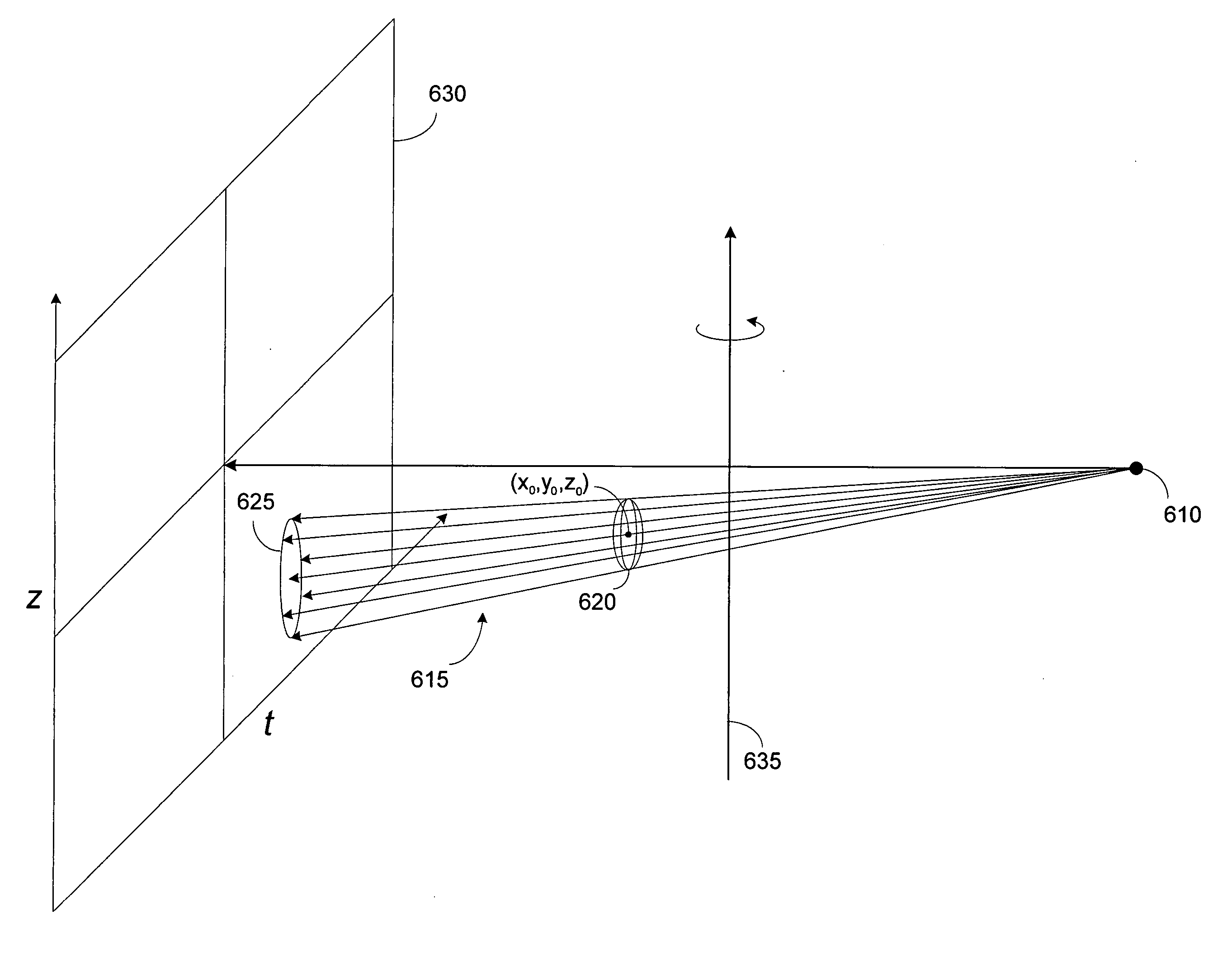Methods and apparatus for identifying subject matter in view data
- Summary
- Abstract
- Description
- Claims
- Application Information
AI Technical Summary
Benefits of technology
Problems solved by technology
Method used
Image
Examples
Embodiment Construction
[0062] As discussed above, segmentation of reconstructed data, and particularly, segmentation of relatively small structure, is limited by noise, blurring and loss of resolution resulting from the reconstruction process. Structure at or below the resolution of the reconstructed data, though present in the view data, may be unavailable to detection and / or segmentation algorithms that operate on reconstructed data, such as the application of filters adapted to respond to structure of interest in the reconstructed data. For example, the reconstruction processes may blur or eliminate structure to the extent that a filter will not be responsive enough to provide filter outputs that can distinguish the structure of interest.
[0063] Model-based techniques have been employed to avoid some of the problems associated with reconstruction and post-reconstruction image processing algorithms, such as filtering. Model-based techniques may include generating a model to describe structure assumed to...
PUM
 Login to View More
Login to View More Abstract
Description
Claims
Application Information
 Login to View More
Login to View More - R&D
- Intellectual Property
- Life Sciences
- Materials
- Tech Scout
- Unparalleled Data Quality
- Higher Quality Content
- 60% Fewer Hallucinations
Browse by: Latest US Patents, China's latest patents, Technical Efficacy Thesaurus, Application Domain, Technology Topic, Popular Technical Reports.
© 2025 PatSnap. All rights reserved.Legal|Privacy policy|Modern Slavery Act Transparency Statement|Sitemap|About US| Contact US: help@patsnap.com



